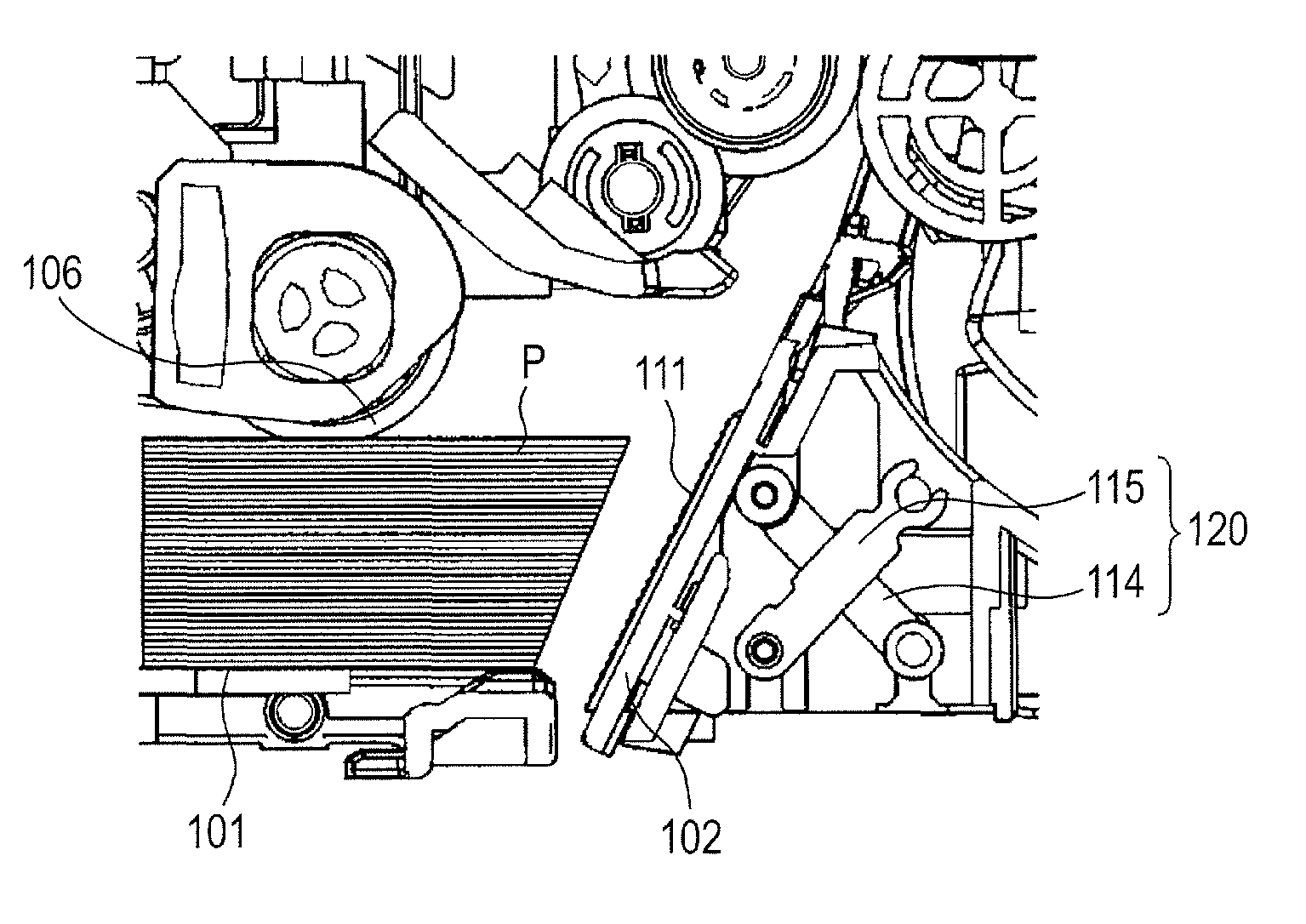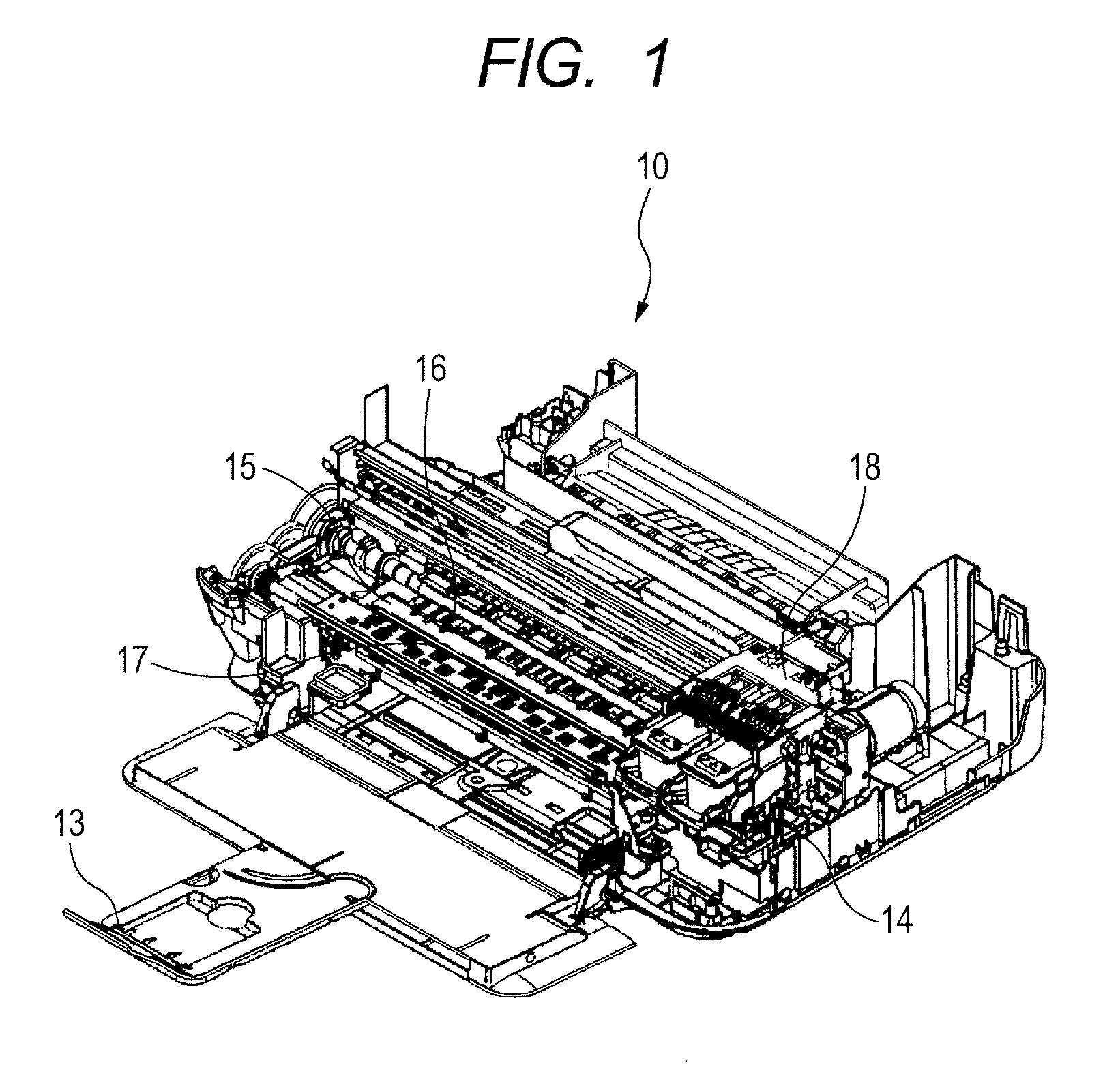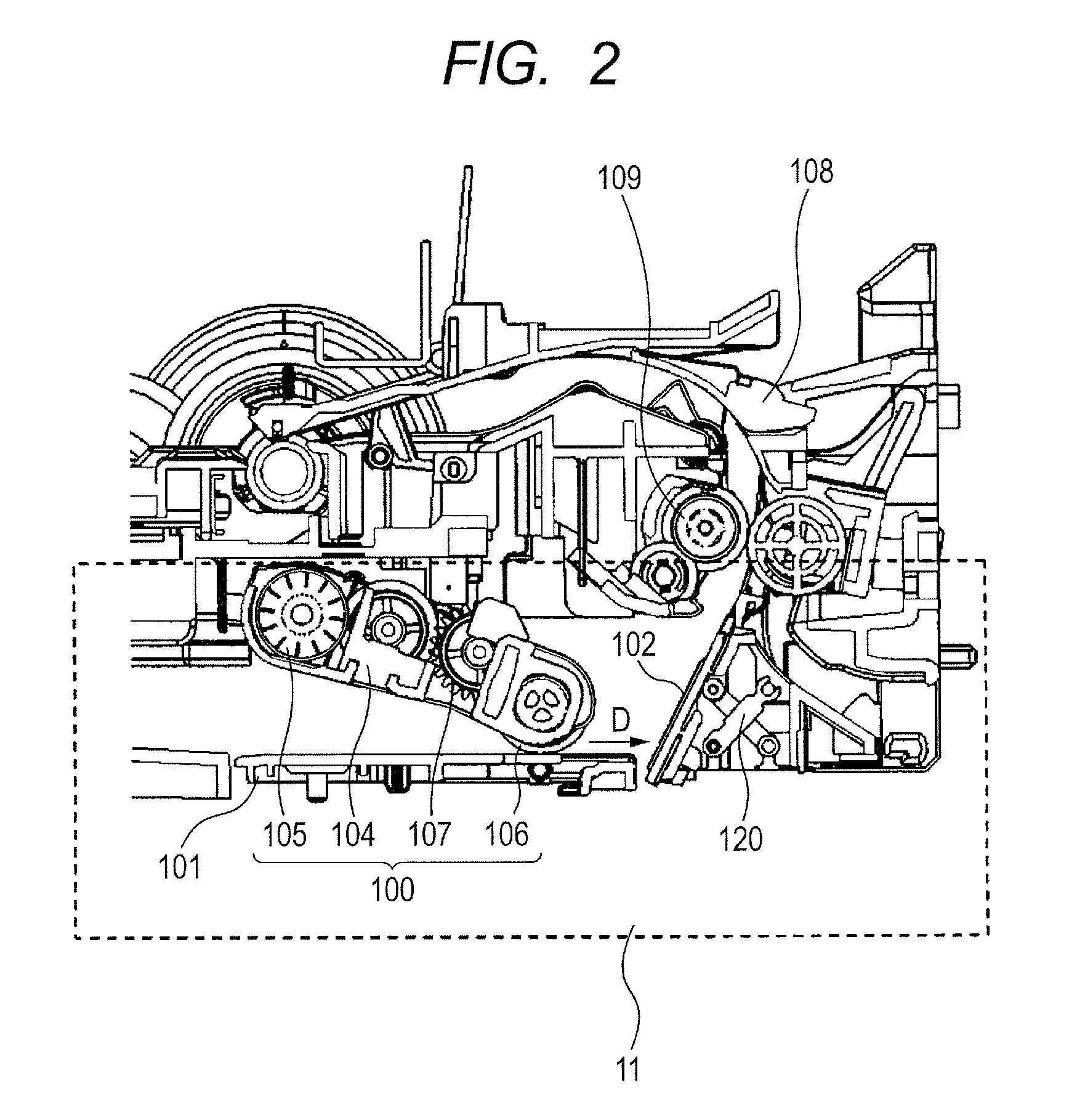Sheet feeding device and recording apparatus
a feeding device and recording device technology, applied in the direction of thin material handling, article separation, function indicators, etc., can solve the problems of difficult to separate papers, difficult to separate recording media, and inability to set such a relation between resistances, so as to reduce the separating resistance in separating recording media, and reduce the separating resistance.
- Summary
- Abstract
- Description
- Claims
- Application Information
AI Technical Summary
Benefits of technology
Problems solved by technology
Method used
Image
Examples
embodiment 1
[0031]FIG. 1 is a perspective view showing an inner constitution of an ink jet recording apparatus 10 which is an embodiment of a recording apparatus of the present invention. FIG. 1 mainly shows a constitution of an image forming section which records an image on each recording medium. The image forming section is constituted of a recording head 14, a platen 15, a pair of main conveying rollers 16, a sheet discharge roller 17, a carriage 18, and the like. In the ink jet recording apparatus 10 shown in FIG. 1, each recording medium fed from a sheet feeding device (not shown: description will be made later in detail) disposed in a bottom surface of the apparatus passes through a conveying path (not shown) positioned in a rear part of the recording apparatus and curved in a U-shape, and the medium is conveyed to the platen 15. Afterward, the recording head 14 discharges ink to record the image on the recording medium while scanning along the platen 15. At this time, the recording head...
embodiment 2
[0051]A recording apparatus of the present embodiment will be described. In the recording apparatus of the present embodiment, a constitution of a link mechanism 120 is different from that in the above ink jet recording apparatus 10 of Embodiment 1. Hereinafter, the constitution of the link mechanism 120 will be described in detail.
[0052]FIG. 13 is a sectional view showing the constitution of the link mechanism 120 disposed in an ink jet recording apparatus of the present embodiment. In the present embodiment, a link member 114 and a link member 115 having an equal length are arranged. One end of each of the link members 114 and 115 is attached to a separating member 111. On the other hand, the other end of each of the link members 114 and 115 is rotatably attached to an inclined surface member 102.
[0053]In the present embodiment, the link member 114 and the link member 115 support the separating member 111 at a projecting position, in an inclined state at an angle φ to a traveling ...
PUM
| Property | Measurement | Unit |
|---|---|---|
| force | aaaaa | aaaaa |
| elastic force | aaaaa | aaaaa |
| rigidity | aaaaa | aaaaa |
Abstract
Description
Claims
Application Information
 Login to View More
Login to View More - R&D
- Intellectual Property
- Life Sciences
- Materials
- Tech Scout
- Unparalleled Data Quality
- Higher Quality Content
- 60% Fewer Hallucinations
Browse by: Latest US Patents, China's latest patents, Technical Efficacy Thesaurus, Application Domain, Technology Topic, Popular Technical Reports.
© 2025 PatSnap. All rights reserved.Legal|Privacy policy|Modern Slavery Act Transparency Statement|Sitemap|About US| Contact US: help@patsnap.com



